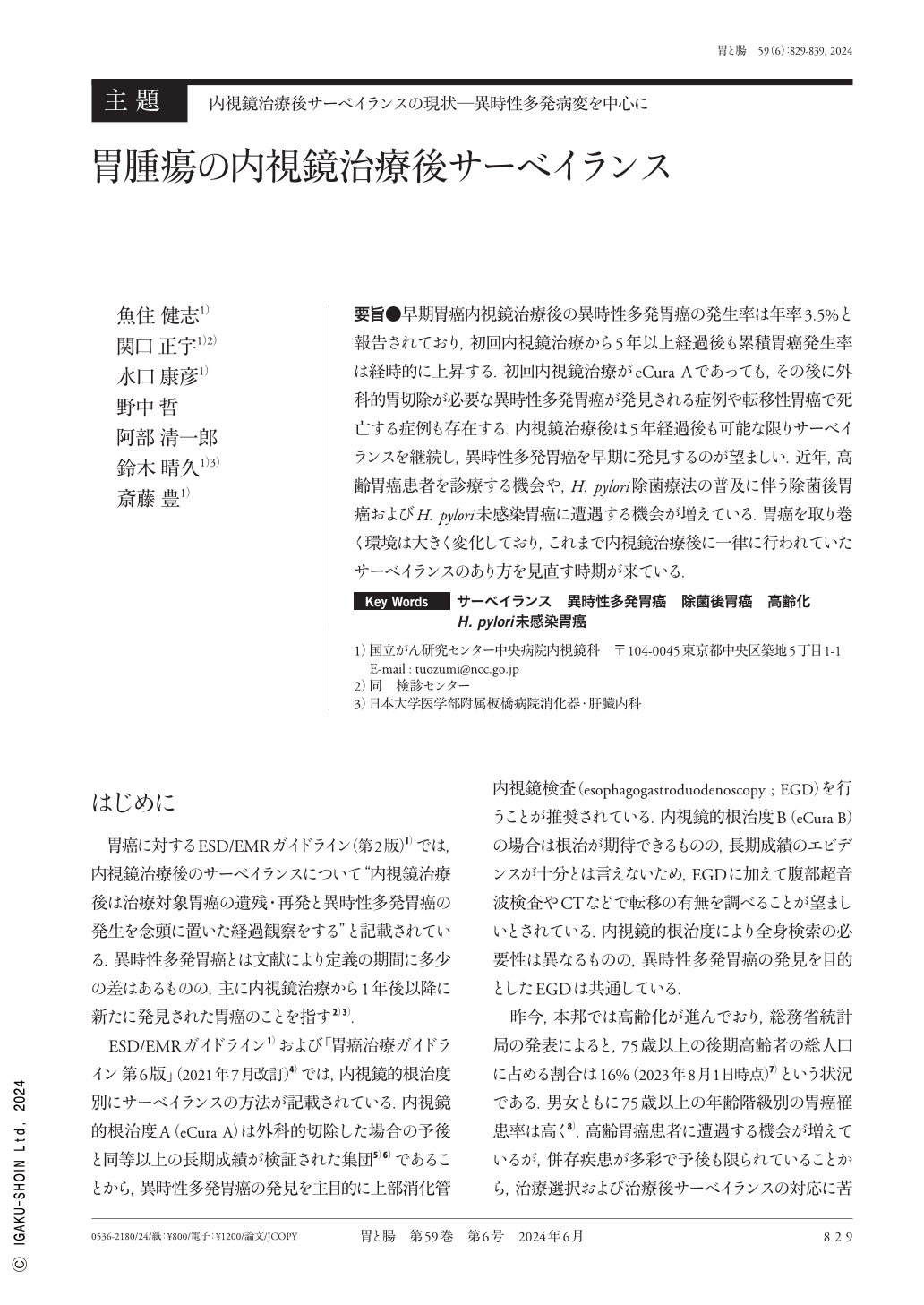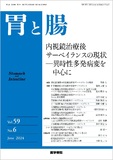Japanese
English
- 有料閲覧
- Abstract 文献概要
- 1ページ目 Look Inside
- 参考文献 Reference
要旨●早期胃癌内視鏡治療後の異時性多発胃癌の発生率は年率3.5%と報告されており,初回内視鏡治療から5年以上経過後も累積胃癌発生率は経時的に上昇する.初回内視鏡治療がeCura Aであっても,その後に外科的胃切除が必要な異時性多発胃癌が発見される症例や転移性胃癌で死亡する症例も存在する.内視鏡治療後は5年経過後も可能な限りサーベイランスを継続し,異時性多発胃癌を早期に発見するのが望ましい.近年,高齢胃癌患者を診療する機会や,H. pylori除菌療法の普及に伴う除菌後胃癌およびH. pylori未感染胃癌に遭遇する機会が増えている.胃癌を取り巻く環境は大きく変化しており,これまで内視鏡治療後に一律に行われていたサーベイランスのあり方を見直す時期が来ている.
The incidence rate of metachronous gastric cancers following endoscopic treatment for early gastric cancer is 3.5%/year, and the cumulative incidence of gastric cancer continues to increase to >5 years following initial endoscopic treatment. Even in cases wherein the initial endoscopic treatment achieved eCuraA, some patients were diagnosed with metachronous gastric cancer requiring surgery or chemotherapy. Therefore, the early detection of metachronous gastric tumors is crucial. In recent years, the diagnosis of older patients with gastric cancer have increased. The widespread use of Helicobacter pylori eradication therapy has increased the incidence of posteradication or H. pylori-negative gastric cancer. Considering the evolving status of gastric cancer, the surveillance protocols that have been routinely applied following endoscopic treatment need to be updated.

Copyright © 2024, Igaku-Shoin Ltd. All rights reserved.


